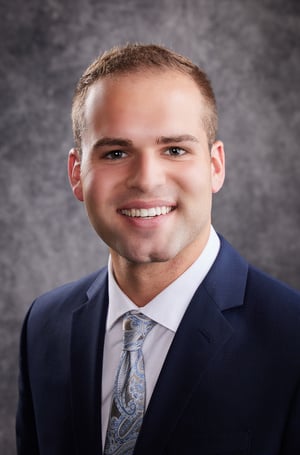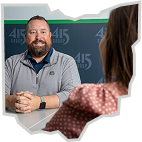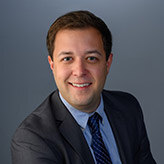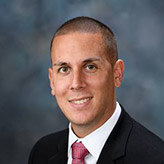
How can clients mitigate the risks of fraud and error? It begins by understanding that occurrences of fraud and errors in financial reporting are often avoidable when proper controls are established and management is aware of the fraud triangle.
The fraud triangle consists of three primary elements involved in the act of fraudulent activity. These include the pressures that motivate someone to commit fraud, the rationalization used to justify the misconduct, and the opportunity to carry it out while remaining undetected.
Every business should consider the fraud triangle to recognize the personal and business pressures that individuals face and the opportunities that someone might have to exploit weak internal controls. While auditors are not responsible for detecting occurrences of fraud, 415 Group assists clients in identifying fraud risks and designing targeted procedures to reduce the risk of material misstatement in financial reporting. During our audit, we provide value through our unbiased assessment of internal controls and use our extensive experience from varying industries to offer recommendations for the prevention and detection of internal control failures. At 415 Group, we issue management letters to communicate our audit findings and assist with the implementation of new internal control processes. Independent of an audit, 415 Group also performs reviews of internal control frameworks to offer feedback on the design and effectiveness of existing controls.
By applying professional skepticism, conducting client inquiries, and performing process narrative walkthroughs, 415 Group encourages accountability within an organization and provides reasonable assurance that financial reporting complies with accounting standards.
Understand your fraud risks and strengthen your internal controls before it’s too late. Reach out to 415 Group today to schedule your audit consultation.
In today’s volatile economic climate, organizations face mounting pressures that can increase the risk of fraudulent activities. Auditors play a pivotal role in identifying and mitigating these risks through comprehensive fraud risk assessments and tailored audit procedures.
Fraud triangle
Three elements are generally required for fraud to happen. First, perpetrators must experience some type of pressure that motivates fraud. Motives may be personal or come from within the organization. Second, perpetrators must mentally justify (or rationalize) fraudulent conduct. Third, perpetrators must perceive and exploit opportunities that they believe will allow them to go undetected.
The presence of these three elements doesn’t prove that fraud has been committed — or that an individual will commit fraud. Rather, the so-called “fraud triangle” is designed to help organizations identify risks and understand the importance of eliminating the perceived opportunity to commit fraud.
Economic uncertainty can alter workers’ motivations, opportunities and abilities to rationalize fraudulent behavior. For example, an unethical manager might conceal a company’s deteriorating performance with creative journal entries to avoid loan defaults, maximize a year-end bonus or stay employed.
Fraud vs. errors
Auditing standards require auditors to plan and conduct audits that provide reasonable assurance that the financial statements are free from material misstatement. There are two reasons an organization misstates financial results:
- Fraud, and
- Error.
The difference between the two is a matter of intent. The Association of Certified Fraud Examiners (ACFE) defines financial statement fraud as “a scheme in which an employee intentionally causes a misstatement or omission of material information in the organization’s financial reports.” By contrast, human errors are unintentional.
External audits: An effective antifraud control
While auditing standards require auditors to provide reasonable assurance against material misstatement, they don’t act as fraud investigators. An audit’s scope is limited due to sampling techniques, reliance on management-provided information and documentation, and concealed frauds, especially those involving collusion. However, auditors are still responsible for responding appropriately to fraud suspicions and designing audit procedures for fraud risks.
Professional skepticism is applied by auditors who serve as independent watchdogs, assessing whether financial reporting is transparent and compliant with accounting standards. Their oversight may deter management from engaging in fraudulent behavior and help promote a culture of accountability and transparency.
Auditors also perform a fraud risk assessment, which includes management interviews, analytical procedures and brainstorming sessions to identify fraud scenarios. Then, they tailor audit procedures to focus on high-risk areas, such as revenue recognition and accounting estimates, to help uncover inconsistencies and anomalies. Fraud risk assessments can affect the nature, timing and scope of audit procedures during fieldwork. Auditors must communicate identified fraud risks and any instances of fraud to those charged with governance, such as management and the audit committee.
Additionally, auditors examine and test internal controls over financial reporting. Weak controls are documented and reported, enabling management to strengthen defenses against fraud.
To catch a thief
External auditors serve as a critical line of defense against corporate fraud. If you suspect employee theft or financial misstatement, contact us to assess your company’s risk profile and determine whether fraud losses have been incurred. We can also help you implement strong controls to prevent fraud from happening in the future and minimize potential fraud losses.
© 2025





